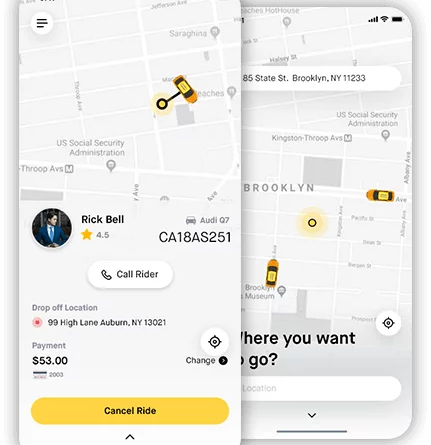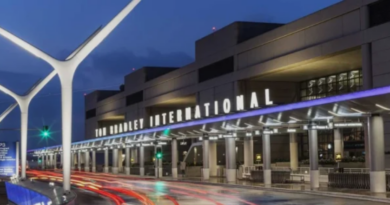What Are the Best Practices for Reducing Wait Time in Taxi Apps?
Reducing wait time is one of the most critical aspects in the success of taxi applications, particularly in the realm of taxi app development for services like Uber, Lyft, and other ride-hailing platforms. It significantly affects user satisfaction, retention, and overall service efficiency. Long wait times can result in user frustration and the eventual abandonment of the app, while shorter wait times contribute to a better customer experience and increased user loyalty. This article examines best practices for reducing wait times in taxi app development, highlighting the crucial role of technology, operational strategies, and data analytics.
1. Real-Time GPS Tracking and Mapping
Real-time GPS tracking is the backbone of any taxi app, providing accurate information about the driver’s location and ETA (Estimated Time of Arrival). The more precise this system is, the better users can be informed about how long they will wait for their ride.
How It Helps:
- Efficient Driver-User Matching: Real-time tracking allows for optimized matching between available drivers and riders. The system can allocate drivers that are nearest to the rider’s location, reducing pickup time.
- Clear Communication: By allowing users to track their driver in real-time, they have a clear understanding of when to expect the vehicle, which reduces anxiety and perceived wait time.
- Data for Route Optimization: GPS data collected over time can be used to optimize routes and prevent delays caused by traffic or roadblocks, further reducing waiting time.
Best Practices for Implementation:
- High-Quality Mapping API: Use services like Google Maps or Mapbox for accurate, up-to-date map data.
- Real-Time Traffic Data Integration: Incorporating real-time traffic information can allow drivers to avoid congested routes, leading to quicker pickups.
2. Smart Driver Allocation and Dispatch Algorithms
The driver allocation system is fundamental to reducing wait times. The goal is to match riders with the closest available driver, but this process requires more sophistication than merely picking the nearest driver.
How It Helps:
- Minimizing Idle Time: Smart allocation ensures that drivers aren’t sitting idle and are constantly moving towards potential passengers, reducing the distance and time to the next rider.
- Optimized Dispatching: By considering factors like traffic conditions, vehicle types, and ride demand, advanced algorithms can dispatch drivers more effectively, ensuring that riders get picked up as soon as possible.
- Balancing Supply and Demand: Dynamic driver allocation can adjust based on areas with high demand, ensuring more drivers are available where riders need them most.
Best Practices for Implementation:
- Use of AI and Machine Learning: AI-driven allocation algorithms can learn from past rider-driver interactions to improve the speed and efficiency of future matches.
- Prioritize Ride Pooling: For shared rides, smart algorithms can efficiently group riders with similar routes, reducing the overall number of trips and improving driver availability.
3. Geo-Fencing and Hotspot Identification
Geo-fencing allows taxi apps to create virtual boundaries around certain areas (geo-fences), and these areas can help in efficient driver allocation. Hotspot identification, on the other hand, refers to pinpointing locations with high ride demand at particular times, such as airports, stadiums, or entertainment districts.
How It Helps:
- Focusing Resources in Demand Areas: By identifying these hotspots and geofencing them, the app can ensure that more drivers are stationed in high-demand zones, reducing wait times for riders in these areas.
- Predictive Analytics for Anticipation: Predictive algorithms can help forecast when and where demand will spike, allowing drivers to be pre-positioned for rapid pickups.
- Dynamic Pricing and Incentives: To ensure driver availability in specific zones, dynamic pricing and driver incentives can be used to encourage drivers to move to high-demand areas.
Best Practices for Implementation:
- Demand Forecasting Models: Implement machine learning models that analyze historical data to predict demand surges in particular areas at specific times.
- Proactive Driver Repositioning: Use driver notifications and heatmaps to guide drivers toward areas that are about to experience high demand.
4. Real-Time Communication Between Driver and Rider
Clear communication is critical for reducing wait times and ensuring smooth ride experiences. Often, the confusion between drivers and riders leads to unnecessary delays.
How It Helps:
- Clarifying Pickup Points: Drivers can quickly and easily reach riders by allowing real-time chat or calls between them. This can be especially useful in complex or crowded areas where finding the rider might be difficult.
- Reduced Time Spent on Incorrect Locations: If a driver is having trouble locating the rider, real-time communication ensures any issues can be resolved immediately, avoiding excessive waiting.
- Enhanced Transparency: Real-time updates on the driver’s status (e.g., delayed due to traffic) can keep the rider informed, reducing the chance of rider frustration.
Best Practices for Implementation:
- In-App Communication Features: Integrate in-app messaging and call options to enable seamless communication between the driver and rider without needing to leave the app.
- Automated Pickup Point Suggestions: The app can suggest ideal pickup spots (e.g., designated taxi stands) based on the rider’s location to minimize delays.
5. Pre-Booking and Scheduled Rides
Offering users the ability to pre-book rides can greatly reduce perceived wait times, as they can schedule their rides in advance and know that a driver will be available when they need it.
How It Helps:
- No Wait Time for Pre-Booked Rides: For riders with scheduled travel plans, pre-booking removes the uncertainty of ride availability and ensures that a driver will be there at the designated time.
- Driver Scheduling Optimization: This feature also allows drivers to plan their routes and schedules better, ensuring they are available for pre-booked rides without disrupting their current workload.
Best Practices for Implementation:
- Flexible Pre-Booking System: Implement a pre-booking system with options to schedule rides days or even hours in advance.
- Driver Notification System: Notify drivers of scheduled rides well in advance to avoid last-minute cancellations or delays.
6. Incentivizing Driver Availability
One common challenge in taxi apps is ensuring that enough drivers are available during peak times. If there aren’t enough drivers, wait times inevitably increase.
How It Helps:
- Ensuring Driver Availability in High-Demand Areas: By offering bonuses or surge pricing in areas where demand is high, apps can ensure that more drivers flock to these locations, reducing wait times for users.
- Retention of Drivers: Incentives such as performance-based bonuses or flexible working hours can encourage drivers to remain available, particularly during busy periods or late hours.
Best Practices for Implementation:
- Real-Time Incentives and Surge Pricing: Ensure dynamic pricing systems are in place that offers real-time bonuses to drivers in demand-heavy zones.
- Driver Rewards Program: Implement a rewards program for top-performing drivers who consistently reduce wait times for riders.
7. Fleet Management for High Availability
For companies that operate their own fleet, effective fleet management is key to reducing wait times. A well-maintained and optimally dispatched fleet ensures that vehicles are always ready and nearby when requested.
How It Helps:
- Vehicle Availability: Proper fleet management ensures that vehicles are well-maintained and downtime due to repairs or maintenance is minimized.
- Fuel and Route Optimization: By monitoring fuel consumption and routes, the app can better manage the fleet, ensuring that drivers use the most efficient routes and stay within a closer radius to riders.
Best Practices for Implementation:
- Real-Time Fleet Monitoring: Use GPS and other telematics to track fleet vehicles in real-time and re-route them as necessary to maximize availability.
- Predictive Maintenance Systems: Implement predictive maintenance systems that alert managers when vehicles need servicing before a breakdown occurs.
8. Reducing Wait Time via Ride-Pooling
Ride-pooling or shared rides are another way to reduce the overall number of vehicles needed at any given time. This allows taxi apps to service more riders with fewer vehicles.
How It Helps:
- Fewer Vehicles, More Riders: Ride-pooling reduces the number of vehicles on the road while increasing the number of passengers served, which can significantly lower wait times, especially during rush hours.
- Cost Savings: Ride-pooling can be offered at a lower cost to riders, encouraging more users to opt for shared rides during busy periods, indirectly reducing the strain on driver availability.
Best Practices for Implementation:
- Smart Ride-Pooling Algorithms: Use sophisticated algorithms to match riders with similar destinations while minimizing the number of detours, thus maintaining efficiency.
- Encouraging Ride-Pooling: Provide discounts and incentives to encourage users to select shared rides, reducing individual vehicle demand.
9. Monitoring and Analytics
Constantly monitoring key metrics such as average wait time, driver response time, and ride demand patterns can help identify inefficiencies in the system. By using this data, taxi app companies can optimize their operations and improve wait times.
How It Helps:
- Continuous Improvement: By analyzing patterns in wait times, ride demand, and driver availability, companies can continually improve their services.
- Problem Identification: Analytics can help identify problem areas where wait times are consistently longer, allowing companies to make targeted improvements.
Best Practices for Implementation:
- KPI Dashboards: Implement a KPI dashboard that tracks critical metrics like wait times, ride requests, and driver availability.
- AI-Driven Insights: Use AI to predict trends and suggest improvements to dispatch systems, driver incentives, and other operational factors.
Conclusion
Reducing wait times in taxi apps is a multifaceted challenge that necessitates a combination of technological advancements, smart operational strategies, and continuous data analysis. By leveraging real-time GPS tracking, intelligent driver allocation, geo-fencing, and predictive analytics, taxi apps can significantly reduce wait times and improve customer experience. Moreover, features like ride-sharing, pre-booking, and excellent driver communication can streamline the entire process, ensuring both rider satisfaction and driver efficiency.
As the taxi app continues to grow, adopting these best practices will not only reduce wait times but also position companies to provide a more competitive, dependable, and user-friendly service.




